RESIN&RUBBER
Introduction
Resin and rubber is the popular name call those very common polymers. Interestingly the name firstly came from natural resin and rubber like rosin, now it conventionally refers to man-made one which has similar properties, that resin usually shows hardness while rubber is soft one.
Resin could be devided into thermoset one and thermoplastic one, the later we also call it "plastics." The biggest difference is thermoplastic one could be reshaped by heating while the thermoset can't. Strictly traditional rubber should be concluded into thermoset resin, you can deem it as especially soft(elastic) thermoset resin--interestingly some soft thermoplastic resins also show similar properties like rubber, for those we commonly call them TPE(thermoplastic elastomer) or TPR(thermoplastic rubber) so as to distinguish with traditional rubber(however now they are also more adopted in "rubber" concept).
Resin
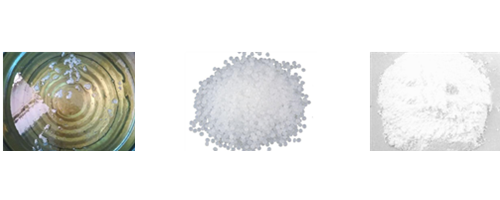
The most frequently used thermoset resin is epoxy resin, unsaturated polyester resin and phenolic resin. The resin is originally in liquid(soft) form, by heating or adding curing agent, the groups and unsaturated bonds on resin molecule will react and finally form net structure leads the resin hard. The process is like oligomer's however not strict polymerization so we just call it "solidification". After solidifying the resin shows excellent strength but cannot be reshaped. They are well applied in adhesive, construction(like leveling floor), furniture(like river table), boat, windmill, etc. Silicon resin is one speical thermoset resin that introduce silicon group or silicon-oxide bond, it has even better stability.
Due to reusable and easily shaping advantages, thermoplastic resin is more widely used in our life. Polyvinyl choloride(PVC), polyethylene(PE), polypropylene(PP), polyethylene terephthalate(PET), ethylene-vinyl acetate copolymer(EVA), polyurethane(PU), polyacrylonitrile(PAN), polyamide(PA or Nylon) are the famous plastics whose name and abbreviation can be found everywhere such as bottle botten and clothes label. While there're also many seldom seen types but still plays important role in engineering and industry like polycarbonate(PC), polyformaldehyde(POM) and polyphenylene oxide(PPO), and some special heat-resisting types like polyimide(PI), polysulfone(PSF), polyphenylene sulfide(PPS),etc. There's also special functional resin called ion exchange resin applied for ion removing in water treatment.
Since those resins mostly uses suspension polymerization method in very large quantity so as to lower cost, we are not manufacturer but one of the major agents sell Chinese resins. We sell nearly all brands in China from our cooperated factories. In the past we only face to domestic market, with the progress of our technology and capacity, we are confident in introducing our excellent resins with competitive price to overseas customers.
Rubber
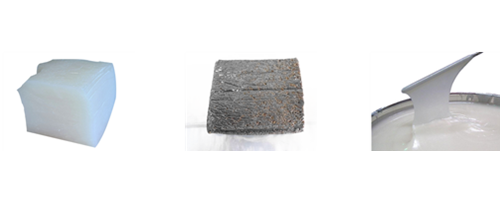
The rubber produced in China are mostly from petrolchemical facotries belonging to Sinopec and we are agent of them. It can be roughly divided into nature rubber, polybutadiene rubber(BR), polystyrene-butadiene rubber(SBR), polynitrile-butadiene(NBR) and polyisobutylene-isoprene rubber(IIR),as well as some widely used TPE kinds like polyurethane rubber(UR or TPU), SBS(styrene-butadiene-styrene block copolymer), SEBS(styrene-ethylene-butylene-styrene block copolymer), SIS(styrene-isoprene-styrene block copolymer) and polyethylene propylene rubber(EPR). For each kind there're also many detailed types: for example BR could be sorted as high-cis one, middle-cis one and low cis one; SBR could be included into traditional SBR, SSBR(solution-SBR) and HSR(high styrene rubber); IIR has halogenated types. Furthermore, for each type there're many brands such as SBR1502/SBR1500/SBR1712 which component ratios are a little different and result difference in properties.
Tyre, shoes, cable, sealer, belt, gloves are rubber's main application. According to usage we commonly use two to several types as well as many additives. We are not only agent but also expert of rubber. We have compared our domestic rubbers with foreign brands in our own laboratory so as to know the analogues. If you want to try China rubber instead of used one, then we can no doubt suggest you accurate brands.
Resin and Rubber Additives
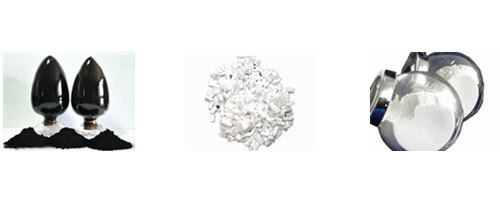
· Filler and Reinforce Agent
Filler and Reinforce agent usually use inorganic material such as carbon black, silicon dioxide, calcium carbonate, magnesium carbonate, etc. Carbon black is the biggest filler for rubber, while white carbon black is the second and alternative for light colour rubber. It is also the filler for thermoset resin. Calcium carbonate and magnesium carbonate are other cheaper fillers as replenishment and can save cost, they are usually made in special light types.
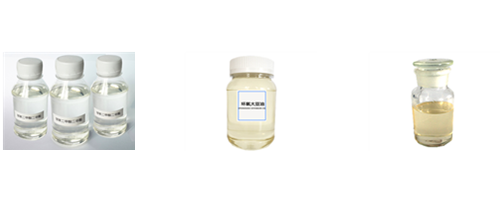
· Plasticizer and Curing Agent
Plasticizer is the main additive of resin espeicially for theromoplastics like PVC to achieve higher plasticity and better processing experience. Phthalic acid ester(PAE) is the mostly used family includes DEP, DMP, DEHP, DOP, etc. There're also alternatives like fatty acid ester, epoxide, polyol ester qualified for food grade plastics. Curing agent is another necessary additive for thermoset resin, it also calls hardener. We usually use fatty and alicyclic amine like DETA and AE, or aromatic amine like m-PDA, DDM and DDS. Phenolic aldehyde and acid anhydride can be used as high temperature curing agent for resin used in electronics. Each type of curing agent meets various requirement and occasion, we can also use two additives to achieve better effect or devide curing process into two steps.
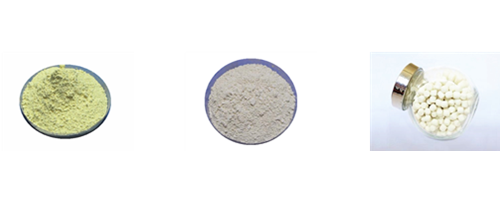
· Accelerator
Accelerator is especially designed for rubber vulcanization, it can raise speed, lower temperature as well as enhance reaction. Zinc oxide is the widely used inorganic accelerator which can be also perform as reinforcer. M(2-mercaptobenzothiazole, also call MBT),DM(2,2'-dibenzothiazoledisulfde),TMTD(tetramethylthiuram disulfide), ZDC(zinc diethyldithiocarbamate, sometimes call EZ),ZDBC(zinc di-n-butyldithiocarbamate, also called BZ),ZDMC(zinc dimethyl dithiocarbamate, names PZ as well),ZMBT(MZ) are the typical organic accelerators, we can provide them both in pure and masterbatch form for convenience.
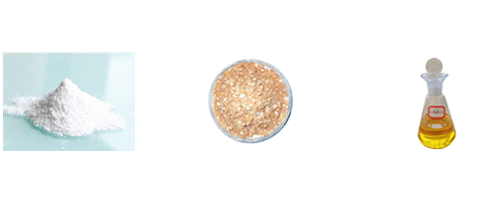
· Antioxidant
According to its name, antioxidant(in rubber also call antiaging agent) is the additive reducing oxygen and oxydant's impact on polymer. TNPP(tris(nonylphenyl)phosphite), 168(tris(2,4-ditert-butylphenyl) phosphite),1010, 1076, 1330 and many other hindered phenol antioxidants are commonly used types for resins; ODA(octylated diphenylamine), TPPD(N-(p-toluene-sulphonylamido-N'-phenylene diamine)), RD(poly(1,2-dihydro-2,2,4-trimethyl-quinoline), also call TMQ), MB&MBZ(2-mercaptobenzimidazole and its zinc salt), SP(styrenated phenol) are the main antioxidants for rubbers.
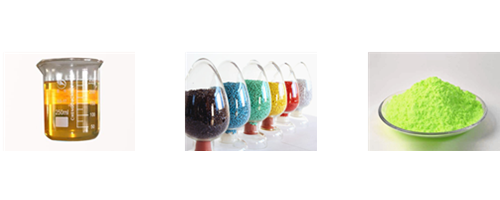
· Other additives
Rubber needs solvent for softening and easy treatment. Now we mostly use naphthenic oil for its safety and well performance. Resin like epoxy resin also needs solvent to reduce its viscosity often called thinner. There're inactive solvents like benzyl alcohol and active thinners like different kinds of glycidol ether. Colour masterbatch and fluorescent brightener are important material as well which bring colour and brightness to our products. Lubricant like zinc stearate and PE wax can not help processing and mold releasing, but also increasing brightness. There're also other speical composite material like anti-frosting agent(anti-blooming agent) can block small holes and react with ozone and moisture so as to prevent rubber showing white in strict weather or dramatic temperature changing.
